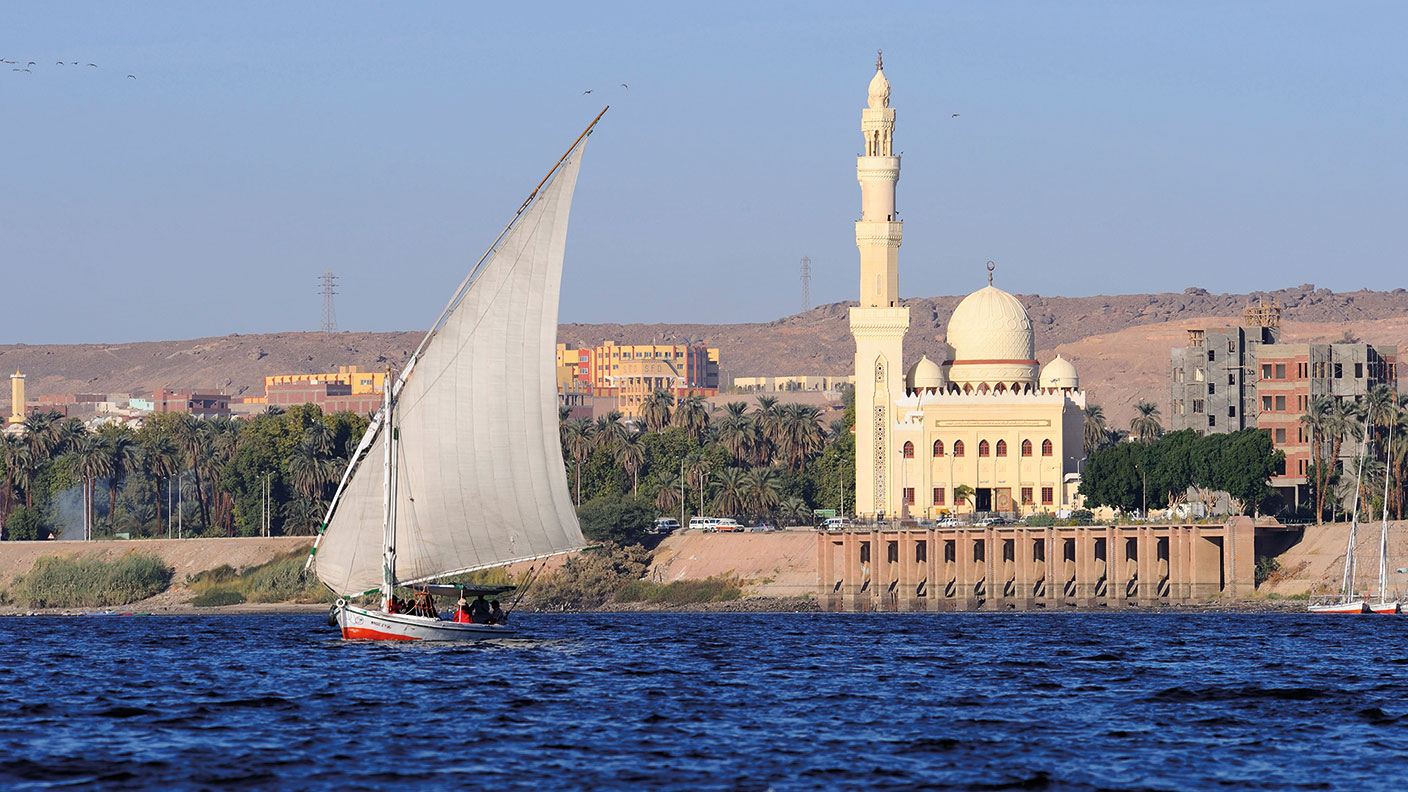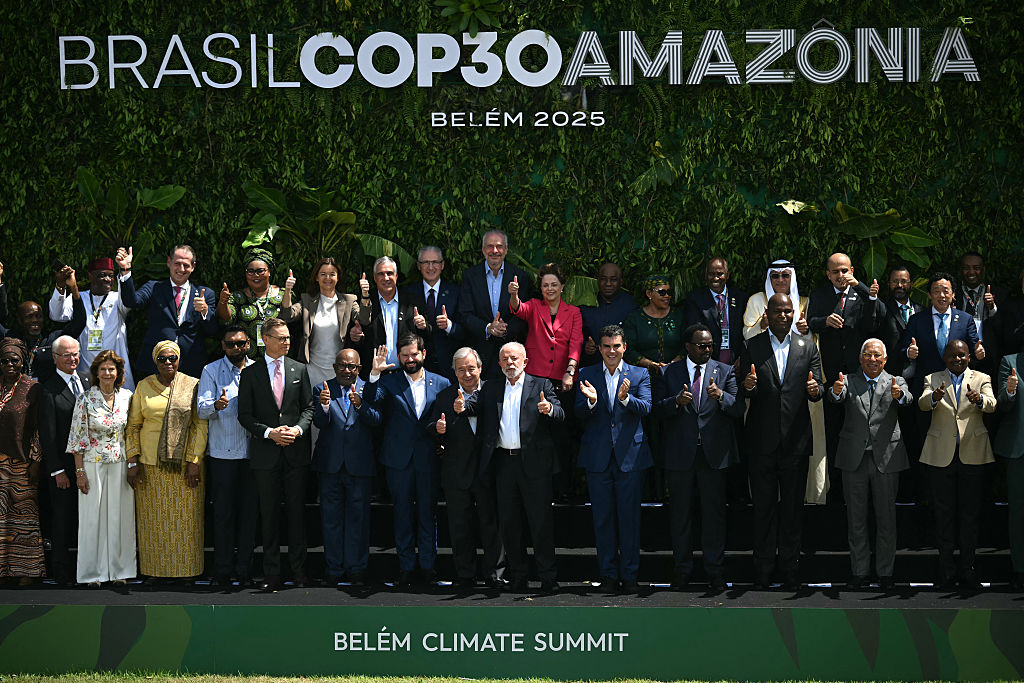The world in 2040: expect water shortages and a bellicose China
Jonathan Compton predicts the key economic and political changes investors should factor in over the next two decades.

Futurology: “the systematic forecasting of the future, especially from present trends in society”. The sole difference from Voodoo is that the latter sometimes works, so strong is the belief of its adherents. The most famous forecasters used to be sci-fi and fantasy writers such as H.G. Wells or Aldous Huxley, but later “futurists” (they liked to give their Voodoo a scientific gloss) abandoned ripping yarns in favour of pedantic tub-thumping – witness authors such as James Lovelock (Earth as “Mother Gaia”).
The most successful was Herman Kahn, founder of the Hudson Institute and role model for the insane eponymous Dr. Strangelove in the Stanley Kubrick film. A one-hour consultation on the future cost thousands and his forecasts, like all eminent futurists’, proved as reliable as tarot cards. So while trying to avoid their pratfalls, I give you the world in 2040.
Three key trends to keep an eye on
If economic history teaches a single lesson it is that extrapolating current trends is foolhardy given that politics and economics are cyclical. Still, three long-term trends seem set to continue. By 2040 the world’s population will never have been so old, fat and thirsty.
MoneyWeek
Subscribe to MoneyWeek today and get your first six magazine issues absolutely FREE

Sign up to Money Morning
Don't miss the latest investment and personal finances news, market analysis, plus money-saving tips with our free twice-daily newsletter
Don't miss the latest investment and personal finances news, market analysis, plus money-saving tips with our free twice-daily newsletter
The dominant economic drivers since 1973 have been the global population doubling to 7.8 billion and a shift from a mere quarter of the population living in open market economies to three quarters doing so. This has accelerated consumption and production. These two factors alone explain the extraordinary increase in economic growth and wealth. But the party’s over now.
Although the global population will keep increasing, the growth rate has been declining since the 1970s, from over 2% per annum to 1.1% now; by 2040 it will have dwindled to 0.7%. Later this century the world’s population is expected to shrink – great news for the environment. My hunch is that the tipping point will be sooner than expected. Why? One reason is infertility. In advanced countries the rate in males has been rising steadily since the 1970s, while in women infertility is also rising, but at a slower rate. This is odd given the collapse in smoking and better diets, but no-one has yet discovered any definitive causes.
Far more important, however, is that in every country where real incomes have risen above subsistence levels and women have had a choice along with access to contraception, they have opted to have fewer children; hence live births per female have halved since 1970 (to 2.5) and in the next 20 years are expected to fall to or below the replacement rate of about 2.15. When China ditched its one-child policy, young married couples settled on 1.76 babies, just above the two notoriously shrinking nations of Japan and Italy.
So the population bulge we have seen and which will continue for a while is increasingly a function of better life expectancy. A male born in the UK in 1950 could expect to live to 68 (hence the government setting the state pension at 65). Now it is 81. The same applies to all advanced countries. In less developed ones the change has been dramatic, such as in Ethiopia; there life expectancy has doubled over the same period, to 66.
The work force as a percentage of the total population peaked in 2015 at 65%. Given the number of children alive now we can predict that in 20 years’ time national workforces will be 10%, 20%, 30% and 40% smaller in China, Europe, South Korea and Japan respectively. These shrunken pools of labour will be expected to carry the cost of an ever larger number of the old and ill. The strain on first-world countries is already visible; for others on the way up it is simply unaffordable. It does not bode well for living standards; taxation can only rise. In 20 years we will be paying young skilled workers to immigrate.
A planet of thirsty blobs
What will this workforce look like? Wheezing and obese. According to the Body Mass Index (BMI) gauge, a BMI of 20-25 is good, 25–30 means you are chubby and over 30 denotes obesity. According to the World Health Organisation global obesity has tripled since 1975. Two billion adults, a quarter of the world’s population, are now obese. It is the number-one cause of death. Not that wealthy countries are eating more – calorie intake has been falling steadily – but people are moving less and are kept too warm. But the most depressing fact is that no national diet-programme has ever reduced obesity. Around 40% of the world wearing XXXL underwear by 2040 seems a certainty.
They will be thirsty too. In 2004 the Coca-Cola company was embroiled in a scandal: its new Dasani water at 95p per bottle, it transpired, was not sourced from pristine alpine glaciers but from the mains via a tap in Sidcup. Moreover, it contained a potentially carcinogenic bromate. Red faces all round, but none anywhere in those governments overseeing failing or polluted water supplies. Most of the world’s giant rivers are suffering volume shrinkage, with many becoming toxic – the Ganges, the Yellow River, the Nile and the Jordan. That is less eye-catching than Coca-Cola’s blunder, but infinitely more damaging.
Fresh water is in short supply. Only 2.5% of the world’s water is fresh and of that only a fraction is accessible. Water misuse and pollution are unlikely to be addressed until there is a major shortage. For many countries this will happen before 2040. The “water stress” scale measures how much of its water resources a country uses. Below 10%, the country has very low stress; 40% is too high, anything over 60% is very bad.
Damp Britain is in a good position at only 5%, but over half the world’s population live in areas of high stress: almost all of Africa, the Middle East and the Indian sub-continent (which scores 45%), as well as parts of China. Clean water availability is a good proxy for wider environmental issues and the one most likely to have an enormous impact.
The key global alliances
Demographics, obesity and water are all secular trends where extrapolation is reasonable. Cyclical changes are harder to spot. Just over a century ago fascism had not been invented. Communism was confined to a few intellectual exiles. Fifty years ago China’s GDP was smaller than Italy’s. But two cycles that began with the fall of the Berlin Wall are clearly reversing: democracy (supported by the rule of law) and globalisation (with the free flow of capital).
Although many de-facto dictators still hold mock elections, individual rights and independent judiciaries have been binned, especially in Asia. China, Russia and Turkey all have immovable rulers, while India’s Narendra Modi appears inclined to follow their lead. North Africa, the Middle East and the “Stans”, nations that emerged out of the Soviet Union, have mostly sunk into dictatorships and oligarchies flexing their muscles. With America largely absent under Presidents Barack Obama and Donald Trump there is a vacuum. China has already assumed mastery of most of the South China Sea; where next? Taiwan and the long-disputed border with India. And why not nibble up a few of the Stans along the “Belt and Road” project? One forecast I would put serious money on is that America’s most important Asian base and ally becomes Vietnam.
Expect ructions in Russia
The most intriguing change may be Russia. Bellicose in the extreme, yet with a decrepit economy and infrastructure, along with a shrinking population where the best emigrate, it seems ripe for some payback. The current cosy relationship with China is as unnatural as a two-headed goat, but Russia has one thing China really lacks: natural resources. Whether by 2040 or later, Siberia must be on President Xi Jinping’s agenda; Japan would agree happily if handed back the Kuril Islands and Turkey if allowed to become dominant (again) in the Caucasus. There are simply too many tensions in Central and East Asia to imagine 20 years of peaceful co-existence.
Meanwhile, the retreat from globalisation is accelerating. Since 2015 the ratio of new tariff barriers to those removed has been 3:1. Protectionism, reshoring (bringing factories back home) and a greater awareness of the inherent vulnerability of extended supply chains are on the rise. It is no coincidence that the two great phases of global growth (the late 19th and 20th centuries) were periods of rapid increases in global trade and falling barriers. This reversal does not bode well.
As for the EU, many economists have been forecasting its imminent implosion for two decades, partially because of obvious structural flaws in the euro. Yet it keeps bumbling towards closer union. A major change happened this year, however, which makes its survival more likely and could help underpin future prosperity: the shift towards pan-European debt issuance and thus federal finances. There will be huge bumps – not least when Germany eventually tells France to rein in its overspending – but it may yet emerge as a genuine haven.
Get set for rising prices
What worries me most in this attempt at forecasting is the possible collapse in the value of most currencies. From third-century Rome through to Germany in the 20th century, unfettered money-printing has always ended badly. I don’t expect high inflation immediately, although central banks’ money printing may bring it about in the longer term. More immediately, central banks will simply write off the debt they hold, thus reducing public-debt ratios. The likelihood is that it will work the first time round; but because of that success they will do the same again with different consequences because trust in fiat money (currencies backed by faith alone) will be shaken too hard.
Like Scrooge’s ghost, then, let me show you a typical family Christmas in 2040. The spoiled single child will be gurgling in his high chair, doted on by his parents and grandparents. Soon he will have to support them all. Of the seven people around the table, three will be obese and the same number divorced. The grandparents will have saved their dwindling pensions for the “must have” presents that year. A case of bottled water, a €100 note, a private consultation with an immigrant doctor and a gold coin. In anticipation of this scenario, today’s Toddler Portfolio should be groaning with medical diagnostic and genome firms, armaments, environmental and waste businesses and gold coins.
Get the latest financial news, insights and expert analysis from our award-winning MoneyWeek team, to help you understand what really matters when it comes to your finances.
Jonathan Compton was MD at Bedlam Asset Management and has spent 30 years in fund management, stockbroking and corporate finance.
-
 Renewable energy funds are stuck between a ROC and a hard place
Renewable energy funds are stuck between a ROC and a hard placeRenewable energy funds were hit hard by the government’s subsidy changes, but they have only themselves to blame for their failure to build trust with investors
-
 The war dividend – how to invest in defence stocks as the world arms up
The war dividend – how to invest in defence stocks as the world arms upWestern governments are back on a war footing. Investors should be prepared, too, says Jamie Ward
-
 Did COP30 achieve anything to tackle climate change?
Did COP30 achieve anything to tackle climate change?The COP30 summit was a failure. But the world is going green regardless, says Simon Wilson
-
 Rachel Reeves's punishing rise in business rates will crush the British economy
Rachel Reeves's punishing rise in business rates will crush the British economyOpinion By piling more and more stealth taxes onto businesses, the government is repeating exactly the same mistake of its first Budget, says Matthew Lynn
-
 Leading European companies offer long-term growth prospects
Leading European companies offer long-term growth prospectsOpinion Alexander Darwall, lead portfolio manager, European Opportunities Trust, picks three European companies where he'd put his money
-
 How to capitalise on the pessimism around Britain's stock market
How to capitalise on the pessimism around Britain's stock marketOpinion There was little in the Budget to prop up Britain's stock market, but opportunities are hiding in plain sight. Investors should take advantage while they can
-
 London claims victory in the Brexit wars
London claims victory in the Brexit warsOpinion JPMorgan Chase's decision to build a new headquarters in London is a huge vote of confidence and a sign that the City will remain Europe's key financial hub
-
 The consequences of the Autumn Budget – and what it means for the UK economy
The consequences of the Autumn Budget – and what it means for the UK economyOpinion A directionless and floundering government has ducked the hard choices at the Autumn Budget, says Simon Wilson

